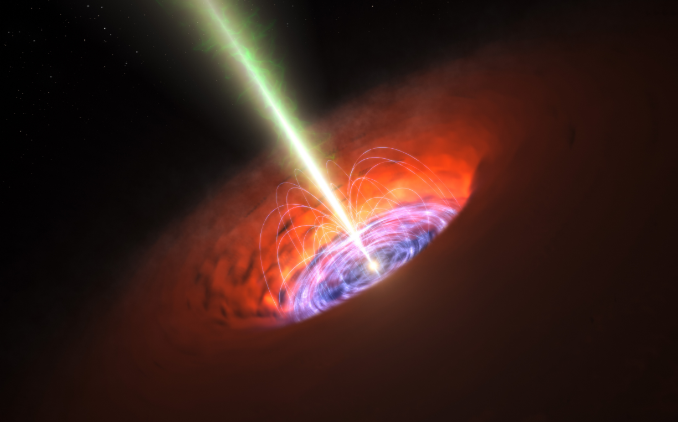
There is a first time for everything. This includes catching sight of matter as it directly plunged into a nearby black hole at a good chunk of the speed of light, an Alpha Galileo article reported.
The fairly momentous event took place in the heart of PG211+143, a galaxy that is a billion miles away from our own. First detected by the XMM-Newton space observatory, it drew attention from researchers of the University of Leicester (Leicester).
Black holes are incredibly dense celestial bodies that generate powerful gravitational fields. Not even light can escape their grasp, which leads to their very appropriate name.
They also demonstrate the most efficient way of stripping energy from matter. Experts believe that the most brilliant events in the universe are the result of stellar matter falling into black holes.
Studying a supermassive black hole in another galaxy
Almost every galaxy has a supermassive black hole at its very center. These black holes are millions or billions of times more massive than the Sun. If they devour enough matter, they can shine very brightly.
But the gas almost never falls directly into a black hole. Instead, it spins around the hole at very high speeds while gradually falling downwards. The resulting accretion disk glows hot enough to be detectable by instruments on Earth.
The movement of this gas is often believed to line up with the rotation of the black hole. But it is also possible for the orbit to follow a different alignment.
Given that matter can approach a black hole from any direction, the output of the supermassive black hole could be altered. But experts could only guess at the results until Leicester professor Ken Pounds published their findings in the Monthly Notices of the Royal Astronomical Society.
Pounds and his team looked at the X-ray spectra of PG211+143, a Seyfert galaxy found in the direction of the constellation Coma Berenices. This galaxy has a very bright active galactic nucleus because its the supermassive black hole eats a lot of matter.
Accretion disks that don't align with the black hole will get torn apart
In their study, the Leicester researchers found that X-rays from PG211+143 tended towards the red end of the spectrum. The readings suggested that matter was falling into the black hole at 30 percent of the speed of light.
Furthermore, the gas is not forming an accretion disk that rotates around the black hole. Instead, it is found very close to the hole, the distance being just 20 times that of the inescapable event horizon.
The findings matched those from earlier studies at Leicester as well as a simulation using the Dirac supercomputer. The previous work showed that misaligned accretion disks will be torn apart by the black hole in a certain way.
In the Dirac-powered simulation, the rings of gas broke apart and crashed into each other. The collisions disrupted their rotation and sent the matter directly towards the black hole at a very high speed.
It seems that this "chaotic accretion" happens fairly often for supermassive black holes. The researchers believe that this kind of direct feeding would slow down the spin of the black hole.
If it slows down, the black hole can consume more gas at its leisure. In turn, this would speed up its growth, explaining why the oldest black holes that formed during the early years of the Universe grew huge so quickly.
Curious about black holes and their potential effect on us? Find out more at Cosmic.news.
Sources include:
Please contact us for more information.





















